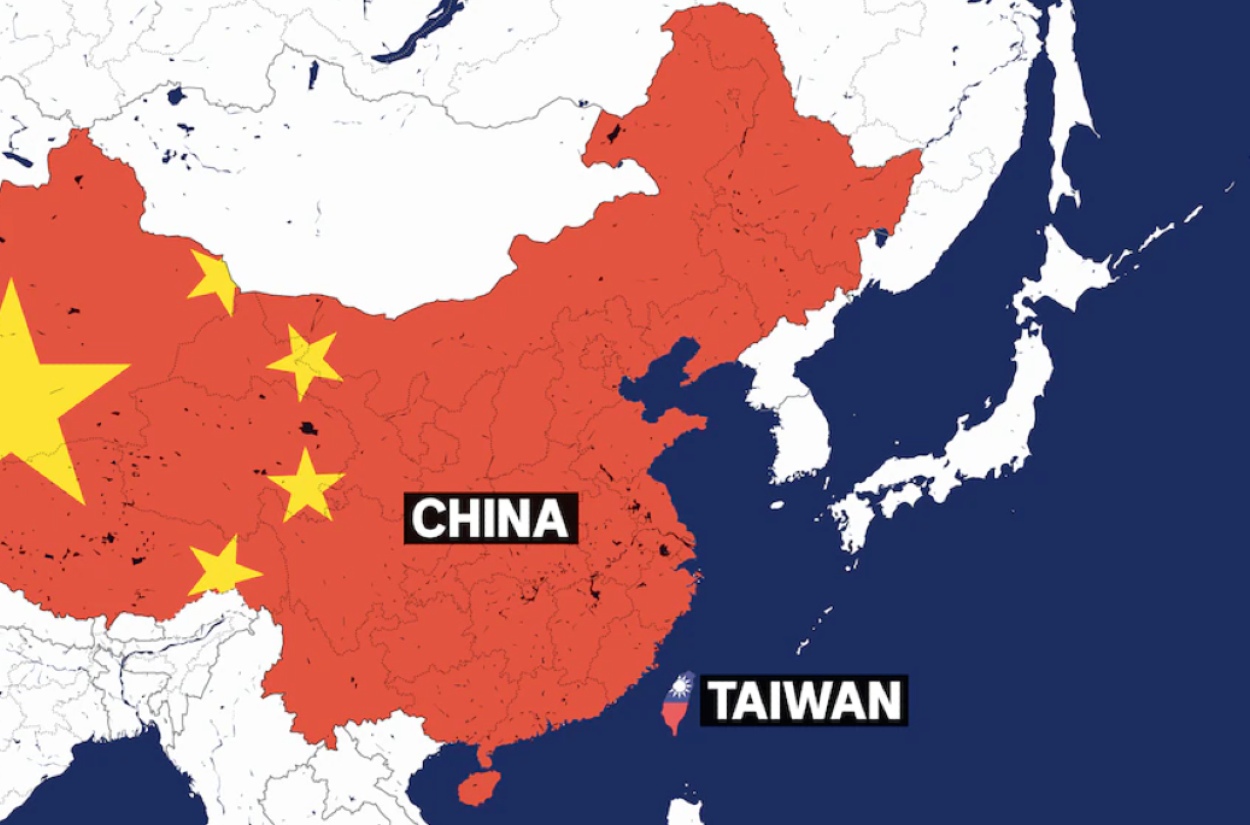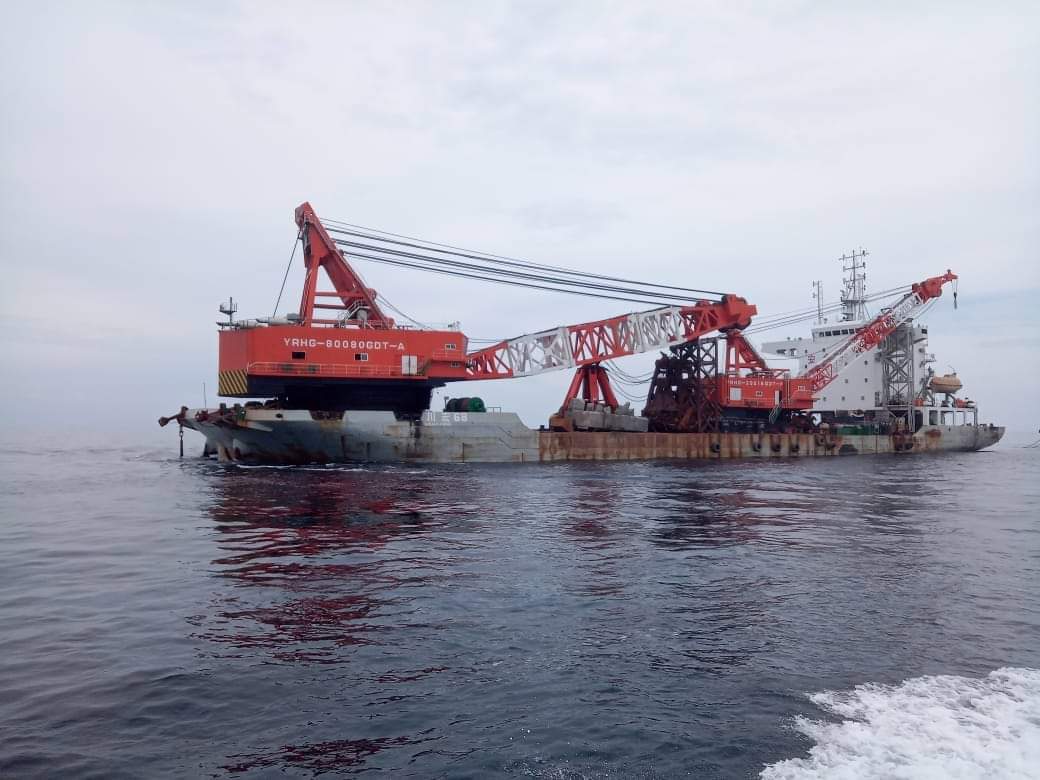Chinese Vessel ‘Caught Stealing’ British Shipwreck From WWII Last Year, Seized Again For Illegal Acts

In a recent crackdown on Chinese illegal maritime activities, Malaysian law enforcement and naval personnel detained the Chinese salvage vessel MV Chuan Hong 68 on July 1 for operating illegally.
The ship, previously involved in the illicit extraction of scrap metal from the WWII wrecks of HMS Prince of Wales and HMS Repulse, was seized this time for paperwork violations.
The information about the detention emerged online, first shared by an X (formerly Twitter) user named Elizabeth Vstx. The user posted photos showing the Malaysian Maritime Enforcement Agency (MMEA) boarding and detaining the MV Chuan Hong 68 off the coast of Tanjung Hantu in Perak state.
The location is on the opposite side of the Strait of Malacca from the vessel’s previous area of operation and approximately 300 nautical miles northwest of Singapore. The MMEA’s inspection revealed that the MV Chuan Hong 68 was carrying 60 unregistered LPG tanks, each weighing 14 kg.
The vessel’s crew comprised 20 Chinese, 20 Bangladeshis, and one Malaysian national. The ship was detained for failing to produce original vessel documents, lacking port clearance, and irregularities in the crew manifest.
AfriPrime App link: FREE to download...
https://www.amazon.com/Africircle-AfriPrime/dp/B0D2M3F2JT
The ship is being investigated under the 1952 Merchant Shipping Ordinance and the 1961 Controlled Goods Act. Based on the photos, it appears that the crane on the vessel has been newly painted since its detention in May of last year.
Although no illegal scrap metal was found this time, the presence of this vessel near World War II wreckage raised significant concerns. In a statement, the Malaysian Maritime Enforcement Agency stressed the importance of following maritime laws to prevent detentions.
“Malaysian Maritime insists on the maritime community to always obey the laws set to avoid action being taken,” the agency stated.
Speaking to EurAsian Times, Pooja Bhatt, a Maritime Security expert, said, “The Chinese Salvage vessel Chuan Hong 68 is an interesting incident but not unique where the vessel owners use the grey areas of international maritime laws to undertake illegal activities. While the vessel was a salvage ship carrying suspicious tools, such as LPG cylinders, that might be used for gas cutting of metal underseas, the ship, per se, wasn’t found doing any salvaging act.”
Bhatt pointed out, “At the same time, it was strategically located just outside 12nm Territorial Seas, so the coastal state cannot have absolute jurisdictional rights against the vessels. However, the Malaysian authorities imposed the vessel with other charges such as not carrying adequate documents and clearances, and arrested it for the right reasons.”
She explained, “Such cases are not new and unique and present a threat to national security in various ways. Therefore, such case incidents must be reported in the media and registered by the coastal states to raise awareness and bring policy measures against such incidents in the future.”
The ship and crew are the subject of an ongoing investigation. The incident highlights the ongoing challenges in regulating illegal Chinese maritime activities and the vigilance required to enforce laws and protect territorial waters.
Controversy Surrounds The Illicit Removal of WWII Wreckage
Last year, Malaysian authorities seized the salvage vessel Chuan Hong 68 off Johor for allegedly dismantling and removing the wreckage of the Royal Navy battleship HMS Prince of Wales and the battlecruiser HMS Repulse.
AfriPrime App link: FREE to download...
https://www.amazon.com/Africircle-AfriPrime/dp/B0D2M3F2JT
These ships were sunk by Japanese forces during their invasion of the Malay Peninsula in December 1941 and are designated as protected war graves.
In May 2023, residents filmed the vessel unloading what appeared to be a large, muddy cannon at a Malaysian scrapyard. During an inspection in May 2023, authorities discovered rusting artillery shells and other scrap metal on board the Chuan Hong 68.
If the crew is convicted of desecrating these war graves, they could face up to two years in prison, as reported by the New Straits Times. At that time, the Malaysian Maritime Enforcement Agency (MMEA) suggested the vessel could potentially be participating in the unlawful salvage of wrecks of British warships.
In January 2024, the Johor Police’s unexploded ordnance team responded to reports of aged artillery shells found at the same scrapyard where Chuan Hong 68 had offloaded its cargo.
Among the items discovered were two 130mm shells, equivalent to the 5.25-inch guns used by HMS Prince of Wales, and 55 aging 40mm shells, standard for Royal Navy anti-aircraft guns during WWII.
Malaysian authorities have not provided updates about the case over the past year. The vessel has since returned multiple times to the same operational area northeast of the Singapore Strait, often disappearing from Automatic Identification System (AIS) tracking for extended periods.
The area corresponds to where the vessel was detained in 2023 and is near the last known location of HMS Prince of Wales.
The vessel, measuring 122 meters by 32 meters and weighing 8,352 gross tons, is registered to Fujian Ya Rui Marine, a company based in Lianjiang County, Fuzhou, China.
The company’s website describes its business as “wrecking sunken ships at home and abroad.” However, according to China, the vessel was chartered by a Malaysian company.
The Chuan Hong 68’s activities highlight the complex and often shadowy nature of the sea salvage industry, raising questions about international maritime regulations and the protection of historical war graves.
The Strategic Motives Behind Such Activities
Shashank S Patel, a Geopolitical and Defense analyst, told the EurAsian Times, “Besides trying to re-establish their marine borders in the extended South China Sea under the hegemonic concept of ten-dash line, the Chinese are claiming all the assets above and beneath the high waters. Chinese vessels have been plundering many resources for decades but remained undetected until the 2000s.”
AfriPrime App link: FREE to download...
https://www.amazon.com/Africircle-AfriPrime/dp/B0D2M3F2JT

Patel explained the possible reasons behind the scavenging activity of the Chinese vessel. Patel said, “The huge availability of pre-atomic steel on British and Japanese sunken ships is a treasure trove for the Chinese government. Their aspiring space missions, medical & scientific equipment need raw steel – free from radionuclides to maximize accuracy in sophisticated instruments. The scrap steel is unexposed to post-atomic explosion isotopes like Plutonium-239, Strontium-90, Caesium-137, and Technetium-99, making it highly precisive in building sensitive detectors.”
Further, he added that the scarcely available scavenged pre-war steel is five times more valuable than normal steel and is widely demanded in scientific endeavors and historical research globally.
“Most spacecraft used research instruments for accurate findings made out of this radio ion-free untainted steel. Also, China used this steel for dark matter experiments for building shields and structures of its detectors,” he explained.
Patel highlighted another aspect, stating that the heavy availability of artillery shells on sunken warships provides Chinese authorities with a free source of military-grade brass and copper. After some small mechanical changes, these materials can be easily reused in many tanks and anti-aircraft guns.
He further pointed out, “These grab dredgers under the guise of fishing boats work as a secondary source of intelligence gathering, surveillance & reconnaissance for Chinese PLA Navy in the high seas. They are used for unofficial tracing of supply chains and their assisting frigates. The place – Tanjung Hantu from where MV Chuan Hong 68 is detained, is a Malaysian Army firing range where their rocket artillery brigade exercises annually.”
He continued, “Post-2015, China secretly launched its global maritime seabed surveying through its naval assets. To analyze choke points and strengthen their waterbed surveying, these unofficial salvage barges were used multiple times to enter the EEZs of many countries in shallow waters. The activities increased post-2021 in the South China Sea near the Malaysian and Philippine coasts.”
In conclusion, Patel said, “It can be said that the illegal Chinese vessels already scavenged many sunken ships & submarine wrecks in many war locations throughout the world. But dead British (HMS Prince of Wales & HMS Repulse) & Japanese (destroyer IJN Sagari and troop ship Hiyoshi Maru & Katori Maru) marine assets are more lucrative to them in the region.”
AfriPrime App link: FREE to download...
- Questions and Answers
- Opinion
- Story/Motivational/Inspiring
- Technology
- Art
- Causes
- Crafts
- Dance
- Drinks
- Film/Movie
- Fitness
- Food
- Giochi
- Gardening
- Health
- Home
- Literature
- Music
- Networking
- Altre informazioni
- Party
- Religion
- Shopping
- Sports
- Theater
- Wellness
- News
- Culture
- War machines and policy


